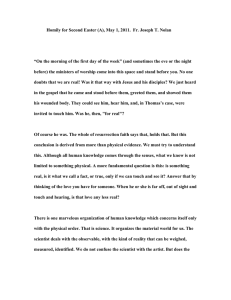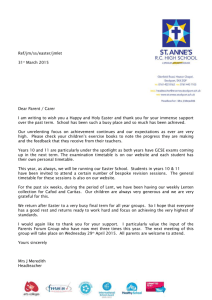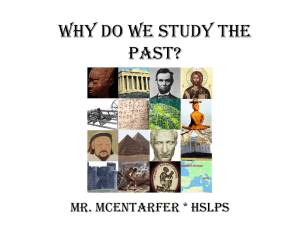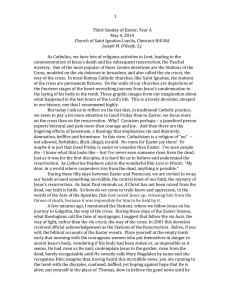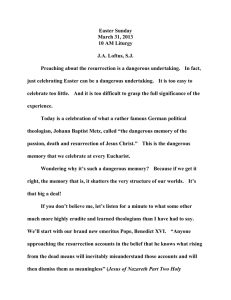Easter Sunday April 20, 2014 10 Am Liturgy
advertisement
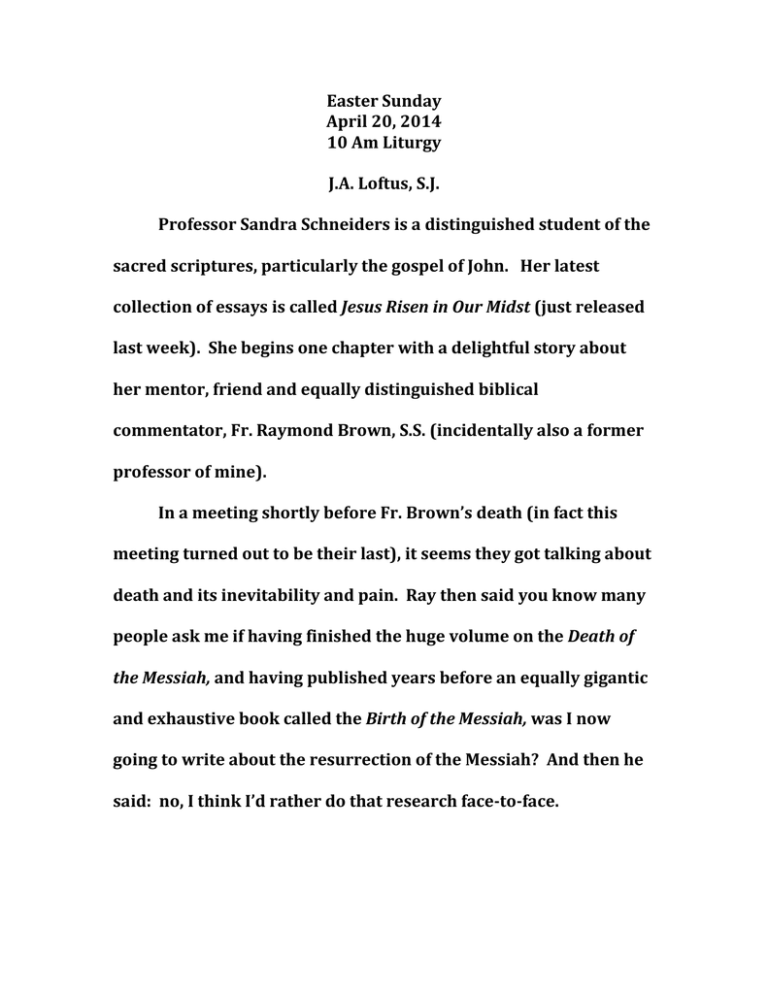
Easter Sunday April 20, 2014 10 Am Liturgy J.A. Loftus, S.J. Professor Sandra Schneiders is a distinguished student of the sacred scriptures, particularly the gospel of John. Her latest collection of essays is called Jesus Risen in Our Midst (just released last week). She begins one chapter with a delightful story about her mentor, friend and equally distinguished biblical commentator, Fr. Raymond Brown, S.S. (incidentally also a former professor of mine). In a meeting shortly before Fr. Brown’s death (in fact this meeting turned out to be their last), it seems they got talking about death and its inevitability and pain. Ray then said you know many people ask me if having finished the huge volume on the Death of the Messiah, and having published years before an equally gigantic and exhaustive book called the Birth of the Messiah, was I now going to write about the resurrection of the Messiah? And then he said: no, I think I’d rather do that research face-to-face. Sandra then says her foolishness in writing about the resurrection is dedicated to him whose wisdom forbade him to even attempt it. Fr. Brown And Sister Sandra are not alone. Another distinguished biblical scholar, Anglican Bishop N.T. Wright, said in his magisterial 800 page tome on the resurrection and Easter experience: “I am convinced that most people, including most practicing Christians, are muddled and misguided on this topic and that this muddle produces quite serious mistakes in our thinking, our praying, our liturgies, our practice, and perhaps particularly our mission to the world.” As if we need even more evidence of the density of what we celebrate here this morning, a final authority, no mean theologian himself, and now Pope Emeritus said: “Anyone approaching the resurrection accounts in the belief that he knows what rising from the dead means will inevitably misunderstand those accounts and will then dismiss them as meaningless.” A wise Presbyterian minister, Frederick Buechner, wrote, “When it comes to just what happened, there can be no certainty. 2 That something unimaginable happened, there can be no doubt.” (Beyond Words: Daily readings in the ABC’s of Faith) Too much of human history has been shaped by this story. But we in the 21st century are in a unique and somewhat bizarre position because we are post-Enlightenment people. Indeed we are even “scientific” people with new cosmologies, new astronomy principles, and a radically new and sophisticated understanding of the physical laws of the universe. We now have at the very least what Schneiders calls an “imaginative implausibility” to deal with. People simply do not rise from the dead. Period. Full-stop! Or so many of us think. And so we have to suspend our disbelief and just wonder what we’re doing here this morning. (A well-chosen word, if there ever was one! Wonder.) And yet artists like Gene Rodenbury, the creator of Star Trek, and C.S. Lewis, the creator of the Narnia Chronicles, both could envision parallel universes where real bodies exist and live but in some strange new ways. Remember: “Beam me up Scotty.” Artists are always ahead of their time. And somewhat ironically, in the early part of the 21st century, serious scientists, particle physicists and astronomers, and 3 mathematicians, seem to have discovered real parallel universes. And the long elusive Higgs boson of last year’s headlines seems now also real. And we have even discovered probably habitable worlds very much like our own orbiting distant stars (that was released by NASA just two days ago). Even our Pope Emeritus refers to the resurrection as “space travel of the heart” and describes whatever happened as an “evolutionary leap,” that reveals a “new dimension of reality.” What’s going on here? Imagine with me for a moment that our post-Enlightenment “imaginative implausibility” may be slowly melting. Stranger things have happened. And perhaps stranger things are still happening. After all we think we do know for certain that all matter is really just energy—and vice-versa. Energy and matter do shift, and drift, and…who knows what else is yet to come in our discovery of this vast imaginative universe we share? Listen to other artists like the poet Gerard Manley Hopkins who swore a century ago, ‘there lives the dearest, deep-down freshness.’ And begged us to let God Easter in us. The word, Easter, for Hopkins, becomes a verb not a noun. God today is still Eastering throughout the world. 4 As pastor Buechner says elsewhere, “He rose. A few say they saw him briefly and talked to him. If it is true, there is nothing left to say. If it is not true, there is nothing left to say.” Truth is not the same as fact. It is after all, all a question of imagination. That’s what scientists do, imagine. That’s what poets do, imagine. That’s what faith does, imagine. The implausibility may be shrinking. But either way, our song today, this Easter, is simple and very old, and shared by billions of our fellow citizens on earth. “He is Risen! Alleluia!” May God continue to Easter in us with even more unimaginable Beauty and Life. Peace! 5
